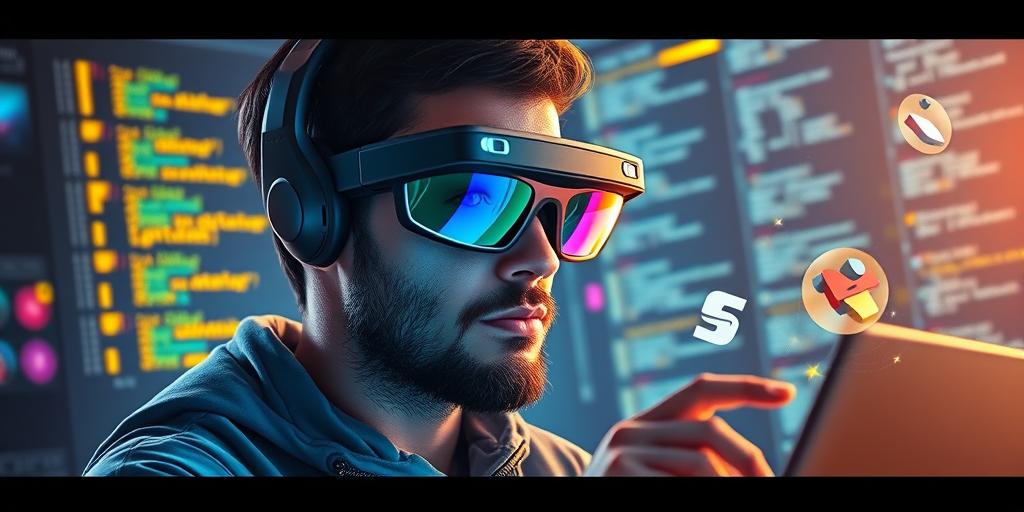What’s Next for Augmented Reality in Software Development? Buckle up, because the future of software development is closer than you think, and it’s augmented! Prepare to be amazed as we delve into the exciting advancements and groundbreaking innovations poised to revolutionize the way we build and interact with software. We’ll explore how augmented reality (AR) is no longer a futuristic fantasy, but a powerful tool reshaping the software development landscape. Get ready to discover the incredible potential of AR and its impact on the future of coding, design, and user experiences.
Augmented Reality: Reshaping Software Development
Augmented reality is rapidly transforming various industries, and software development is no exception. It’s no longer a question of if AR will impact software creation, but how extensively. The integration of AR into software development workflows offers a multitude of benefits. Imagine debugging code in a 3D virtual space, collaboratively designing user interfaces by overlaying digital elements onto physical prototypes, or creating immersive training experiences for new developers. The potential is vast, and the impact is already being felt.
Enhanced Collaboration and Communication
One of the most significant advantages of AR in software development lies in its ability to facilitate seamless collaboration. Teams can now share and interact with 3D models and code in real-time, regardless of their physical location. This boosts efficiency, speeds up development cycles, and improves overall team communication, fostering a more engaging and inclusive development process. AR tools enable developers to visualize complex code structures and data relationships in an intuitive way, promoting faster problem-solving and more effective code reviews. These capabilities are changing the game for remote teams, allowing them to operate with the same level of cohesion and real-time engagement as in-person teams.
Immersive Training and Onboarding
The integration of AR in software development training offers unparalleled effectiveness. By creating immersive and interactive training modules, developers can learn new programming languages and concepts in a more engaging and intuitive manner. New hires can navigate virtual software environments, practice coding exercises in a risk-free setting, and accelerate their learning curve. This also empowers experienced developers to hone their skills through interactive simulations and real-world scenario training. AR can effectively bridge the knowledge gap and greatly improve employee onboarding and training efficacy.
AR’s Impact on User Experience and Design
AR is not only changing how software is developed but also how it’s experienced by end-users. The ability to overlay digital information onto the real world opens up exciting possibilities for user interface (UI) and user experience (UX) design. Developers can create more intuitive and engaging interfaces that seamlessly blend the physical and digital worlds. Think of AR-powered mobile apps that overlay interactive instructions or 3D models onto real-world objects. This allows for more practical, effective, and engaging user experiences.
AR-Enhanced User Interfaces
AR-enhanced user interfaces (UI) are at the forefront of this transformation. Instead of staring at a flat screen, users can interact with software directly on their physical environment. Imagine navigating a complex industrial machine’s control panel through an AR overlay, or using AR to visualize and interact with 3D data models directly within a physical space. The possibilities are limitless, ranging from enhancing everyday applications to revolutionizing sophisticated industrial or medical technologies. This enhances functionality, intuitiveness and user-friendliness of the software products and interfaces.
The Future of AR in Software Development
The journey of AR in software development is still in its early stages, but the potential is undeniable. As technology evolves, we can expect even more groundbreaking innovations. Improved hardware, advanced software frameworks, and wider accessibility will fuel the growth of AR in the field. This will lead to more seamless integration, further enhancing collaboration, improving training, and revolutionizing UX design. The future of AR in software development is bright, promising a more intuitive, efficient, and engaging experience for both developers and end-users.
Overcoming Challenges
Despite the exciting potential, challenges remain. The cost of development, the need for specialized hardware, and the complexity of AR development are obstacles to overcome. However, as the technology matures, costs will decrease and accessibility will increase, making AR more widely accessible to developers of all skill levels and budgets. This wide-scale adoption will drive further innovation and lead to more creative applications and solutions.
Embrace the future of software development. The innovative power of augmented reality is here to transform how we create and interact with software. Start exploring the possibilities today and be a part of this exciting revolution!




